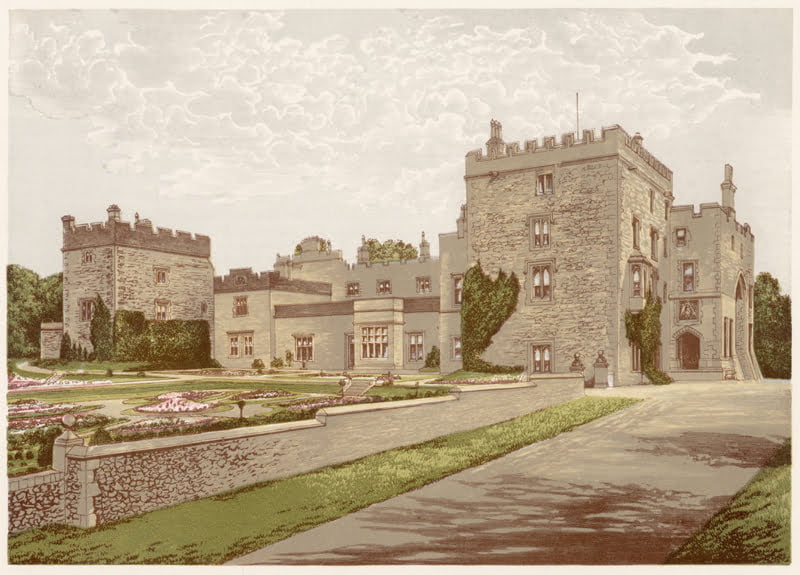Cumbria’s stunning Muncaster Castle was established in the thirteenth century although there have been many additions in subsequent eras. The oldest parts are the original Great Hall, and an impressive fourteenth century Pele Tower which is built on Roman foundations. (It is the four-storeyed, crenelated tower to the right of this picture). Defensive, fortified Pele Towers are common in English and Scottish border areas and date from a period when there were frequent border raids.

Muncaster has two ghosts. One is a White Lady who is sometime identified with a young woman named Mary Bragg who was murdered in the early nineteenth century on the road near the main gate. White Lady ghosts are pretty-much a worldwide trope that centre around the themes of premature death, loss and betrayal.
The second ghost is reckoned to be that of Tom Skelton, a sixteenth fool/jester, and allegedly sinister factotum to his employer, Lord Pennington. Tom ‘Fool’ was said to have played malign tricks on travelers, and to have murdered an unbefitting suitor of Pennington’s daughter. The problem is that the earliest written record we have of Skelton’s malicious activities is from an 1825 work by local journalist and editor, John Briggs. Legends truly do last verbally for many years, but this centuries-old gap between event and recording must give us pause.
Unusually for a servant, Tom was painted. There are two copies of the portrait, and their very existence demonstrates that he was beloved or at the very least, esteemed: a painting would have been an expensive enterprise. On an ominous note, the scroll depicted next to Skelton where a person’s achievements would normally be listed just has his last will and testament.
Tom’s portrait at Muncaster is located at the end of a corridor, off which leads a door to a blue/green room called ‘The Tapestry Room’. The room is famously haunted: several times a year it is the site of experience-nights for groups of ghost hunters. Tom’s reputed antics are diverse: they include making the sound of footsteps in the corridor just outside the door.
Psychologist Jason Braithwaite, whose research includes the neurocognitive factors underlying disorders of consciousness (including predisposition to hallucinations, aberrant perceptions, and perceptual distortions) has conducted research at Muncaster. In conversation there, he reminded me that some people are more likely to perceive that a room’s temperature is is colder where the colour is ‘cool’ (green/blue) such as in the Tapestry Room. People are more likely to be alert and nervous where they are channeled without many directional options (such as in a long corridor) and where there are many portraits (which they may subliminally interpret as scrutinising gazes). Jason and his colleague, Hayley Dewe, wrote an excellent article about near-death experiences for issue 25:2 of the magazine called ‘Occam’s Chainsaw’.
To me, Tom’s portrait is not that of a kindly man, but perhaps I’m biased, having heard the unpleasant stories before I knew their relatively late written source. I have slept in the haunted room and didn’t find it unpleasant, aside from the understandble cold (it was a big castle in October in Cumbria, after all).

